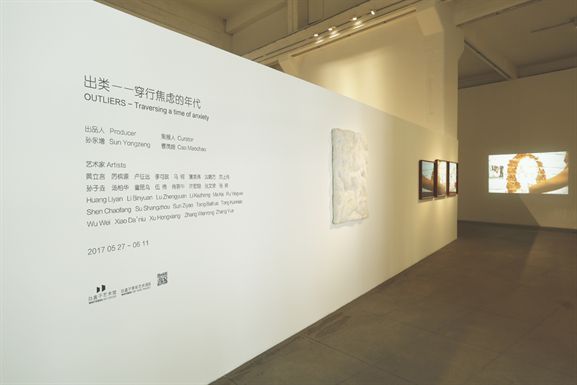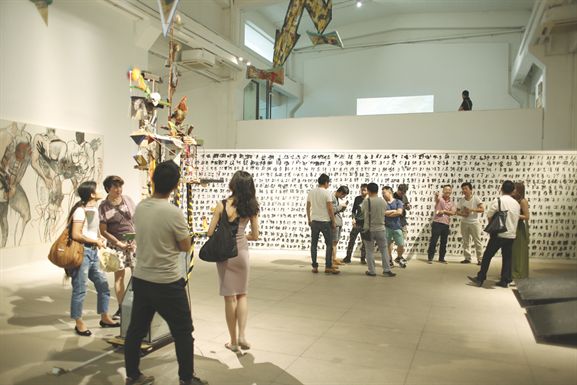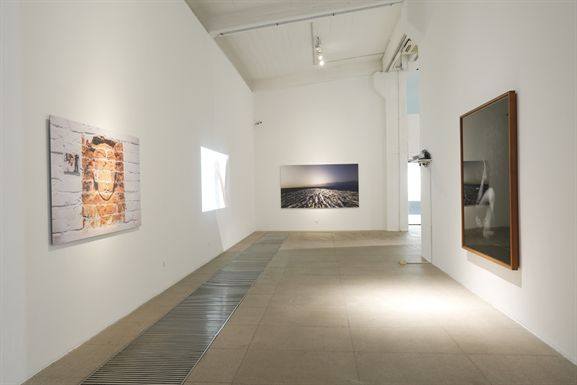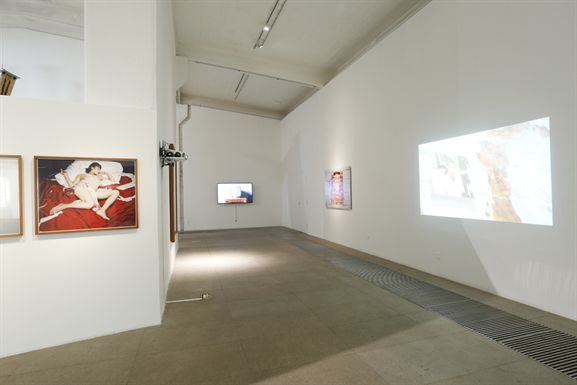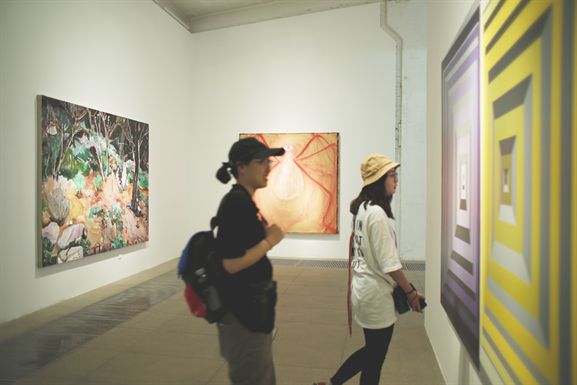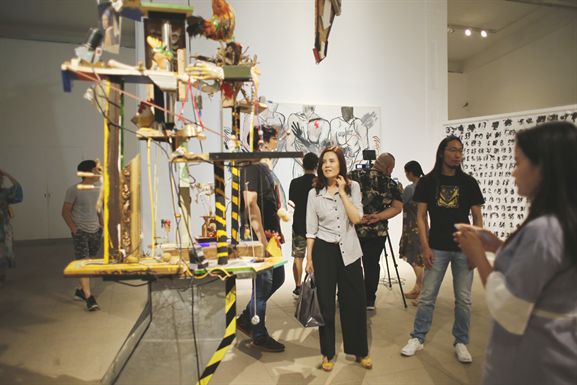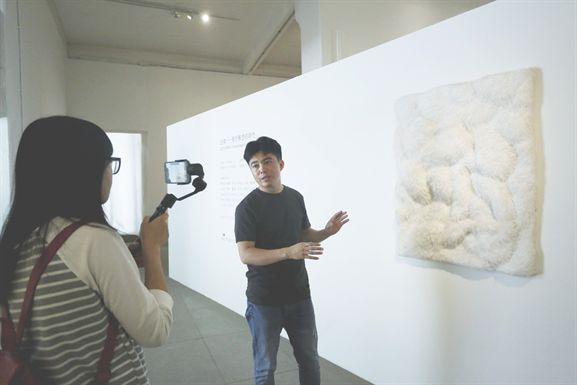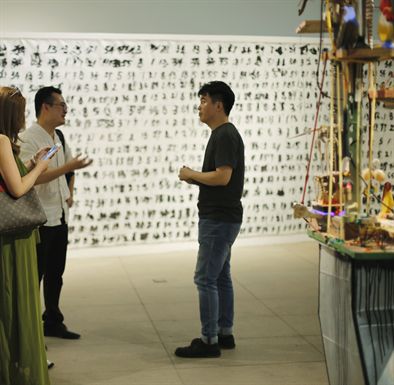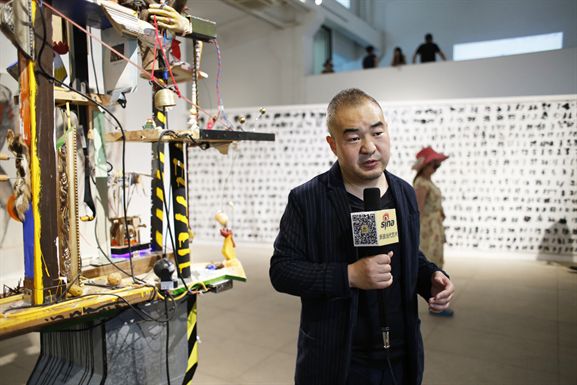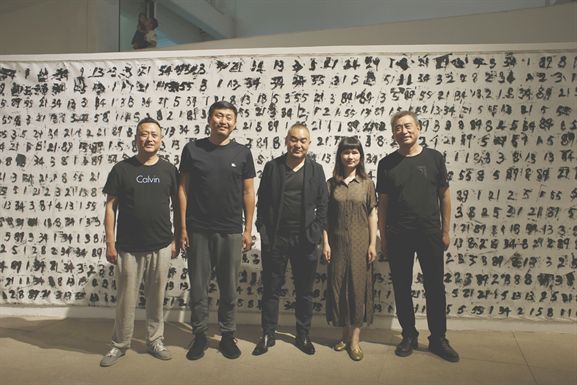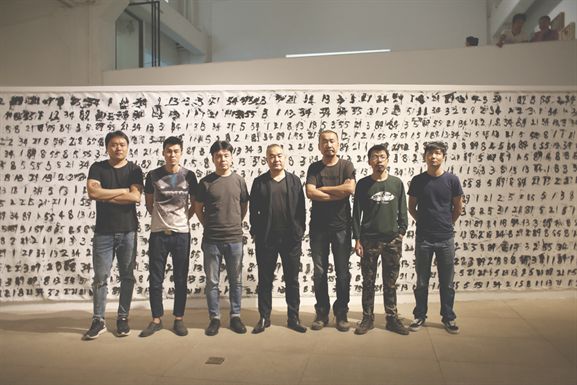May 27 - Jun 11, 2017
Press Release
Curated by the vice-director of the Whitebox Art Center, Cao Maochao, “Outliers –Traversing a time of anxiety” annual group exhibition will open on May 27, 2017. Inviting sixteen artists born from 1970 to 1990 to participate, most of the works on view are “tailor-made” for this exhibition, focusing on the artistic ecology and reality we live in the present. This exhibition marks Whitebox Art Center’s continuous focus on young artists projects, by which to discover and promote young artists with acute attitudes and unique creative approaches.
Based on shifting grounds of the supply and demand of the planned economy to the profit-seeking market economy, particularly, the various economic policies in the 1990s had fundamental impact on the various principles and understanding of the former socialist experience. The versatility of social mechanism that came with it equally challenged the public tolerance, a sense of anxiety outpoured, the artists living in this tidal wave are not the carps crossing the river, rather their artistic practice became the appealing path for a spiritual pursuit. “Outliers” sets the academic tone for this exhibition, resonating with Foucault’s “Technology of the self”, which demands the artist to pay attention to the self, to achieve self-cultivation through internal reflection and external contemplation.
“Chinese patient” has become the portrayal of the general public in the last two decades, referring those who suffer from the symptoms of anxiety that cannot be eradicated. Confronted with anxieties of survival, identity, living space… artist living in this period have equally fallen for the same anxiety, being the “outliers”, they are aware of this time of anxiety, and hope to cure the “anxiety” of our time through artistic practice, and heal through ongoing discussions; they have kept an introspective and self-critical attitude, refusing to be assigned with identities and rehashing iconographies in their works of art. They take the courage to step outside of the existing frameworks and knowledge groups, this is not only a conscious role shifting in the practice of art, but also an active escape.
The participating artists can be divided into different age groups, whose choice of contents and forms also mark an evolutionary progress. Those who were born in the 1970s have chosen painting as their primary vehicle of expression; and those born in the 80s-90s have shown vivid, audacious and versatile characteristics of the time in their works of art. Overall, they have shown significant differentiation from the previous generations of artists, who are not swayed by major political events, neither would they undertake the burden of history on their shoulders. They confront their practice and life, unhinged by the limitations of any artistic medium and material. As a spiritual sample of a young artist exhibition, we look forward to your analysis, and this exhibition will continue to June 11, 2017.
Curator Article
Outliers – Traversing a time of anxiety
Cao Maochao
I. Explanatory Notes
“Lei”(type) generally refers to class, category, particularlyof certain professions, fields of study and etc. that can be further extended to the meaning of boundary. Contemporary art is often construed as a certain type of art, and its different creative mediums may also be further refined into artistic classification, however, the “type” we propose in this exhibition does not rest on the discussion at this level. The diversity of art forms have been exhausted and depleted, many artists are eager to launder their skills, and setting up a wall of obstacles for the late comers; some are obsessed with conceptual approaches for the sake of being “conceptual”, so they fall into the trap of empty conceptual art based on an “idea”; the artistic practices presented in this exhibition wishes to explore those that eventually point to a specific direction: self-cultivation for the artist’s subjective.
Foucault believes there are three ways of shaping one’s subjectivity, through power, knowledge and the technology of the self. A notion that Foucault realized in the course of tracing back historical origin in his late years, who realized other than the former two, another mean by which to cultivate the self is throughthe technology of the self. The core of which points to the focus on the self, that is, “Through one’s own efforts or the other’s assistance, the individual may manipulate their body, soul, intellect, mode of existence in order to transform oneself…” Moreover, Foucault was also interested in the technology administered through power vis-à-vis the technology of the self, which mainly refers to the external power that could transform the self, and objectify the self; whereas, “technology of the self” is realized through one’s own initiative for self-transformation. Coincidentally, Foucault’s notionechoes with the ones of this exhibition: “outlier” manifests the “technology of the self”, and “a time of anxiety” refers to the external power, and by administering the technology of external power to perfect one’s own technology which are both critical components in self-cultivation.
II Unsettling realities
At the end of the 1970s, as the intense pressure in the political sphere waned, internal reforms and the opening up policy were determining factors in the gradual formation of socialist market economy. The improvement in social status has ultimately ushered changes in the arts and cultural fields - a time when the “spring” of arts and culture began to bounce backunder pressure. The art practices during this period, whether those southwestern artists’ “folk painting” displaying genuine and natural artistic forms, or the seemingly amateur artists who participated in the “Start Art Exhibition” whose thought provoking works were inspired by one’s own understanding of art, both of whom have felt the impact of western modern art trends and intellectual waves, due to which their works have shown a level of modernity and freedom. This phenomenon continued until the mid to late 1980s, where various avant-garde art experiments and groups “sprung up everywhere” in the various parts of China. With the shifting grounds from the planned economy based on supply and demand to the profit-seeking market economy, particularly, the various economic policies in the 1990s had fundamental impact on the various principles and understanding of the former socialist experience. The versatility of social mechanism that came with it equally challenged the public acceptance of them that amounts to a sense of anxiety. After Deng Xiaoping’s “Southern expedition”, the country entered the period of reforms, which actively developed socialist work force that became the catalyst for its rapid economic development. Soon after, the first Guangzhou Art Biennale was organized, it signaled and orchestrated the arrival of financial power entering a time when it would impact the development of art. At the time, many art professional have not stepped out from the miseries of political fever and idealistic pursuits of the 1980s atmosphere, who were reluctant to accept the “equal value of exchange” between currency and art. The changing economic environment became the catalyst for social development, and the information exchange in the internet era has led us into a time of unprecedented convenience; regional upheavals continued internationally where the border disputes never ceased, the artistic forms and contents among the practices of contemporary art are also becoming more diverse.
The external power influenced the self-judgment and understanding of people at that time, ushering them into an era of global anxiety. As the unrest on the outside world intensified, the artistic appeal of contemporary art finds an opportunity to be released, for which the rapid development of the social environment provided the artists a historical breaking point for self-renewal. Art critic Robert Hughes once stated, “In the course of technological discoveries as the age of steam transitioned to the age of electricity, engendered a sense of acceleration in the discourse of human civilization including that of the artistic production. Thereon, the pressure of the new experience and the demands that proposed by the new circumstances that encompasses the new experience, the frameworks become unsuitable, and the indoctrinations are no longer fixed.” What the artists confronted is as Robert Hughes suggested, in this era of anxiety, to maintain a consistent drive in one’s creative experience through such historical breaking points.
III Spiritual outliers and identity anxiety
The participating artists of “Outliters – Traversing a time of anxiety” are born between 1970 – 1990 who can be divided into different age groups, their choice of contents and art forms also mark an evolutionary progress. Those who were born in the 1970s have chosen painting as their primary vehicle of expression; and those born in the 80s-90s have shown vivid, audacious and versatile characteristics of the time in their works of art. Overall, they have shown significant differentiation from the previous generations of artists, who are not swayed by major political events, neither would they undertake the burden of history on their shoulders. Their “outlier” positions manifest in the self-awareness of being in the age of anxiety, and hopes to heal such dysphoria through their artistic practice, by which to exercise self-healing. They have kept the introspective and reflective momentum, refused to be labeled or capitalize on the iconography of their works of art, they are a group of artists who are unhinged by the limitations of any artistic medium and material, they are not simply a conscious translation in their own practices, but a proactive escape.
The Origin of Painting
The discussion on painting in the recent years is becoming more thorough, and the artists in this exhibition have had unique experiences with this medium. Opening with Xiao Daniu’s Playboy for the show, the youth holding a rabbit is seemingly related to Bueys’ How to explain painting to a dead rabbit, the artist playfully asks the following questions, how should we look at painting today, and how do we explain our paintings to those with similar experiences; Ma Ke’s Metamorphosis is a work from his “Spiderman” series, drawing from the synopsis of Kafka’s Metamorphosis, in which Gregor Samsa woke up from a restless dream and realized he had became a giant insect, one that is referred to here. The ferocious face and exaggerated composition seem absurd and surreal, but are in fact manifest trenchant reality, with which Ma Ke sighs at the futile expressions of his contemporaries or perhaps their tactlessness. Painting as a mode of expression became the friction between the artist and the thorns of our time, where the pain symbolizes an escape from the spiderweb; Huang Liyan is a young artist represents by the White Box Art Center since 2014 through its young artist project, whose work generates a sense of ambiguity and lyricism through its color schemes and the content depicted, as well as conveying a philosophical perspective of calm objective sharpness of being on the outside. Curator Feng Boyi has once stated that, “His art is like the sleepwalker in a day dream, voicing those surreal prophecies, those who like him are immersed in his absurd nightmares, and those who understand would enjoy the offense in utter silence.” The work in this exhibition, A bad person, a kind person is in fact the case; Xu Hongxiang is a graduate of the Printmaking Department from the Central Academy of Fine Art, yet he’s dived into the discussion of “imagery and painting” in the medium of oil painting, when the subject approaches the “accuracy” of the content, then the language of painting would become self-aware, the works that are seemingly portrayal of the landscape are in fact vehicles for unique visual experiences and command on the imagery, revealing the decisions of what goes onto the painting and its progress; With years of experimentation, Sun Ziyao had put down the burdensome external experience in his painting, while he is mesmerized with recreating the quality of rice paper with mixed materials, he also began to reflect on the origin of painting, his sharp lines reveals stylistic inclines to German Expressionism, and the subjects depicted carries tension of piercing through the paper; and Li Kezheng, a young artist who has been studying colors for the last decade, the integration of lines and colors in this work display a visual effect that challenges the viewers’ past experiences, while optical illusion may only be a phenomenon, the geometric conscience and color logic constitute the language of abstraction in his work.
Material Texture and Expression of the mind
The works of those artists placed in
the central gallery reveal enthusiasm in the use of materials, their unique
creative styles have continued until today. Su Shangzhou’s “supreme” notion
resonates with that of the “outlier”, he once stated that, “The artistic path
is one that demands continuous challenge through the revision of the self; it’s
also the process of depleting the self.” Supreme
– Cacophony (X)” placing white rice paper with dark rice paper tainted with
different schemes of ink marks, filling the “void” within the limited space,
which undoubtedly perforated the ink on paper; Wu Wei, an artist discovered
through the 2016 White Box Art Center young artists project, whose work, like
that of Su Shangzhou, has shown a sense of evolution, a graduate of the
Experimental Art Department of the Central Academy of Fine Art, Wu Wei is an
artist who works primarily with “paper”, instead of infused the traditional and
cultural qualities of “paper” into his work, he only treats it as a “material”
at his disposal. This differentiates the attitudes of two different generations
of artists on the same material, while they both come back to the path of
showing minimal and abstract elements in their works; as a conceptual artist,
Lu Zhengyuan has professed the use of various types of materials. The
spreadability and viscosity of tar are the appeals of this material.Untitled consists of covering a plank of
wood with tar, then using his nails to scratch the surface before it fully
dries. The artist’s subjectivity is at work, while the materials are at his
disposal, at the same time, the tar has left its mark on the hand of the
artist, which constitutes the process of a fully engaged performance art; there
are two aspects of Zhang Yue’s art practice that are unbearable extremes to
most people: extreme solitude or mania. In recent years, he’s been working on
an interview project without a foreseeable date of conclusion. Its content
involves state intelligence concerning firearms. The work he presents in this
exhibition is a translation of high echelon state meeting encoded onto a 10
meters long canvas, for which, an exhibition wall of the same length had
product of war left a cramped entrance where the work can be peeped at; Tong
Kunniao’s sound installation is placed amid others’ relatively quiet works,
born in 1990, his works are playful and energetic, amassing various materials
has he goes, which all became his “toys” are seemingly willful yet follow their
own logic, the clapping of the sound installation establishes a conversation
with the other works, unfolding the way new generation artists engage in their
art practice.
Video Reality
The galleries on the right and the one on the second floor are devoted for works of video art addressing the various social classes and rupture. For instance, the vivid Along the River during Qingming Festival. Li Binyuan’s Portrait was inspired by the 2008 “Yang Jia case” who was executed in 2012. The artist uses an electrical drill, hammer and file as his painting tool to make “smudge, dots, and permeations” on the wall. The figure of Yang Jia jumps out of the wall, through which, as if we could see the million of faces like Yang Jia in this society; Zhang Xuerong’s shifted his focus from painting to video art, who realizes those paintings he had spent a lot of time and efforts for only become one single frame in an animation film. Completely immersed in the making of animation, his work Are You Alright focus on the contemporary environment where events are frequently occurring (the newspaper, television, the internet and etc.) and the relationships of people are complex, information is constantly exploding, under which circumstances, how should we confront them and live with ourselves; Shen Chaofang uses film and photography to respond to social violence, mainstream aesthetics, influx of information, in order to restore the initial impressions of art and life, his works reveal a purification attempt to return to the original. Pu Yingwei received a video footage by chance, which documents the illegal means to determine the gender of unborn babies. Since the second child policy was instated in 2016, this clip caught his attention again.For this exhibition, he presents the footage with a recording of his father watching it and discussing the content to unveil the fundamental values and the subtle relationship between those humble lives and the ever-changing state policies. Tang Baihua’s film Aura over Mogao tells the tale of the Tang monk’s adventure to attain Buddhist sutras, this is the final work of a nine months project in collaboration with a team stationed in Mogao, in order to match the work with the spiritual quality of Dunhuang grotto paintings, all of the clay boards are made of the same mud and straw as those in Dunhuang, that was tested and tried many times to arrive at the same texture. This work not only signals the importance of traditional culture, but also provides a system of reference for art practices in the contemporary.
